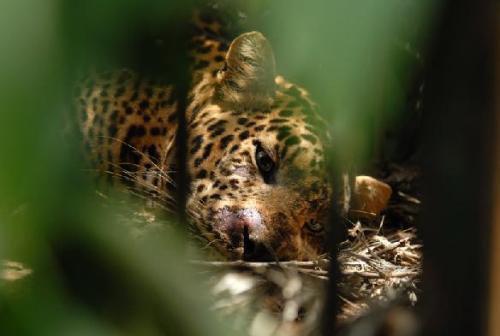Swati Sidhu
The project aims to understand leopard diet and habitat-use in a fragmented landscape dominated by plantations and surrounding protected area. This will assist in examining patterns of human-leopard conflict and develop strategies for conflict mitigation.

The biodiversity rich Western Ghats hill ranges of India have witnessed widespread landscape alteration due to conversion of forests into commercial plantations and monocultures leading to fragmentation and continued degradation of the forest habitat. Forest fragmentation often brings wide-ranging large carnivores such as leopards into contact with people and habitations thereby leading to conflicts.
Leopards (Panthera pardus), the most widely distributed among large felids, persist in human-modified landscapes due to their ability to coexist with other carnivores, use modified habitats, consume diverse prey.
We study leopard ecology in a rainforest-plantation landscape of the Valparai plateau which is surrounded by a number of protected areas in the Anamalai Hills. The plateau abuts newly formed Anamalai Tiger Reserve and acts as an ecosensitive region for the Tiger Reserve. Although in this region leopards co-exist with other large predators (such as tigers and dholes) and there is a diverse prey base, recent human deaths due to leopards have resulted in antagonism among local communities leading to subsequent translocation of leopards. Translocation of so-called problem animals from an area is often seen as an immediate solution while it may further aggravate conflict because of the strong homing instincts of large carnivores.
We aim to understand leopard diet, habitat use in the modified and relatively unmodified landscape of Valparai and Anamalai Tiger Reserve, respectively. With this study, driving factors influencing leopard distribution will be ascertained for a fragmented landscape with patchwork of different habitat types having varying abilities to support different prey communities. A comparison between modified and unmodified landscapes will be important to determine critical habitats of use by leopards. Information on leopard distribution and diet can be extended and related to conflict incidence, which will help identify critical areas of conflict. This is necessary in order to formulate strategies for conflict mitigation and conservation of the species in this region. Recommendations from the study will be provided to park authorities for inclusion in management plan for the Tiger Reserve.